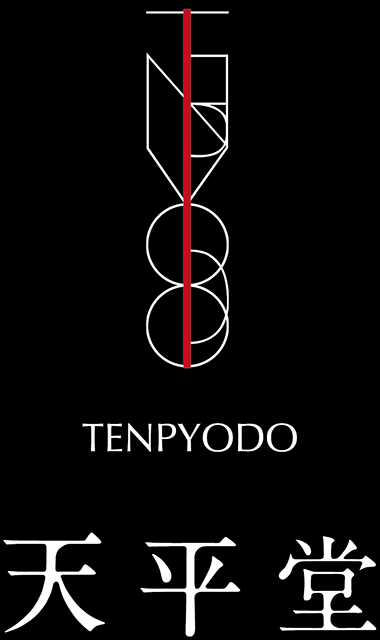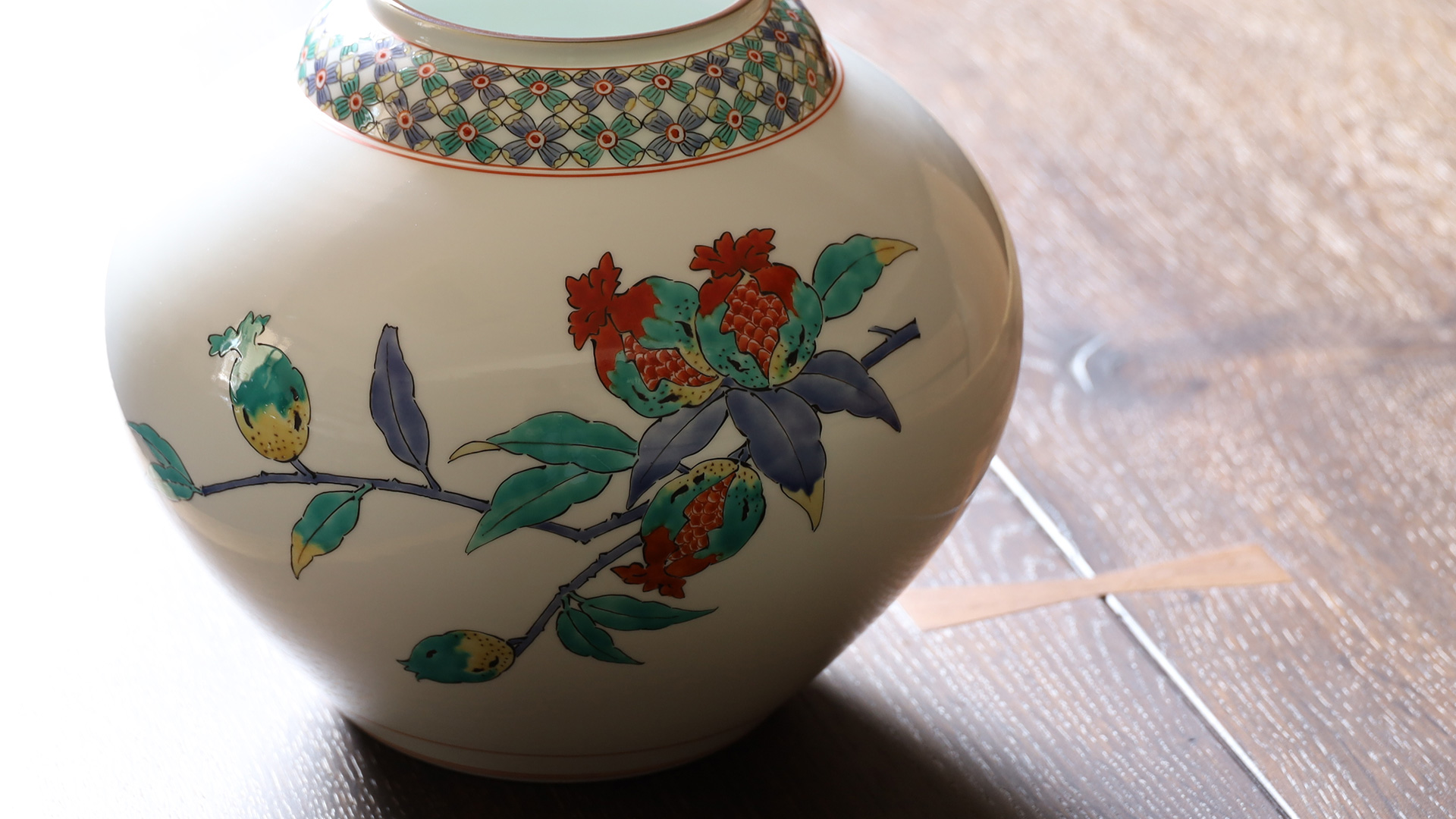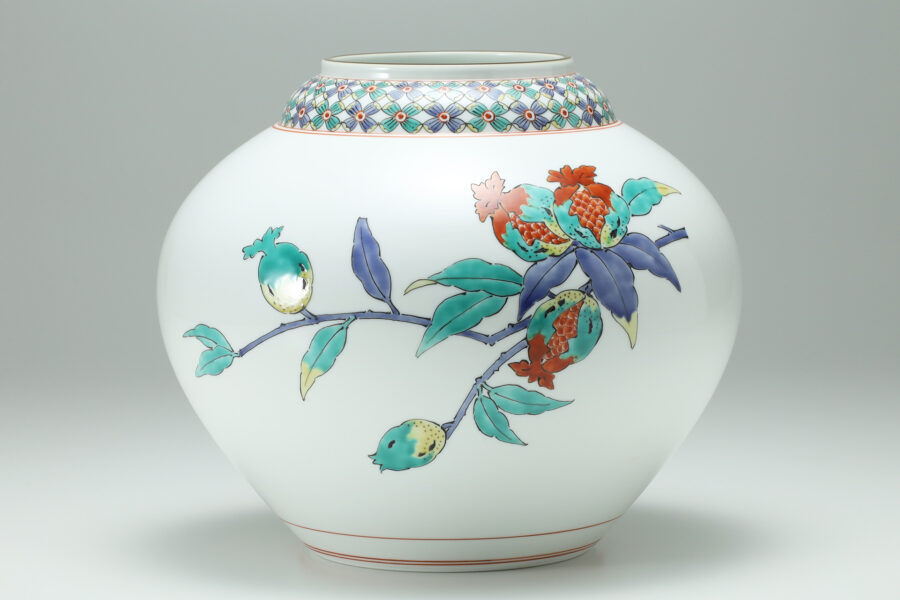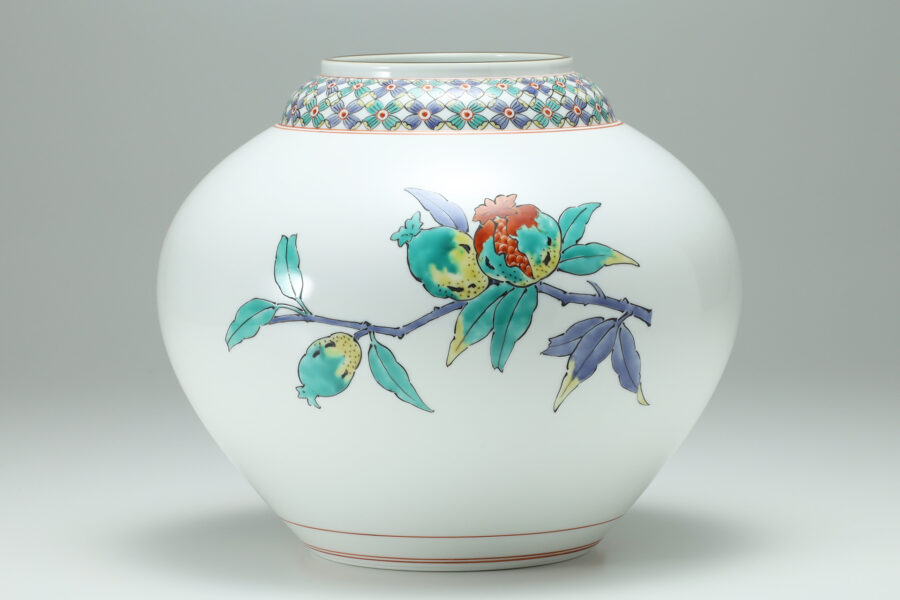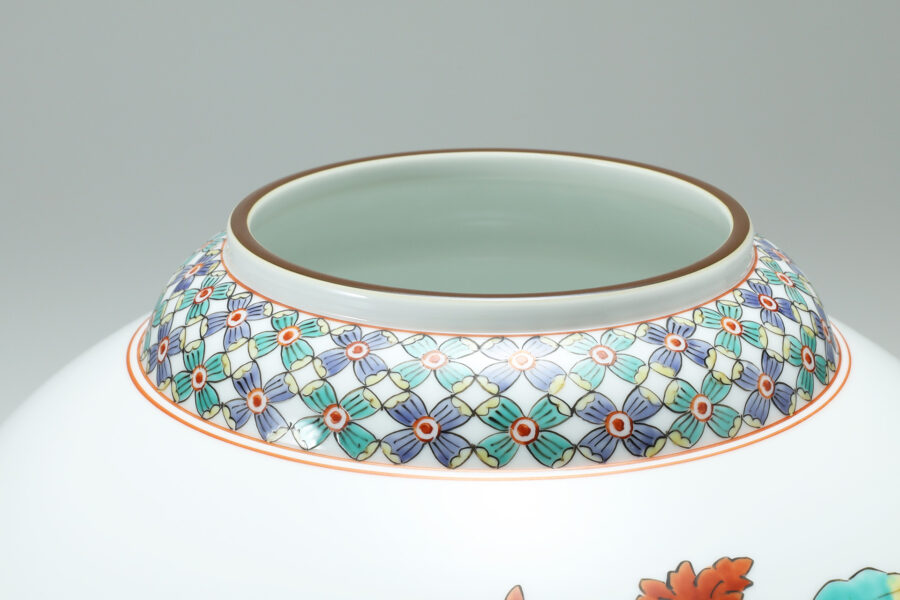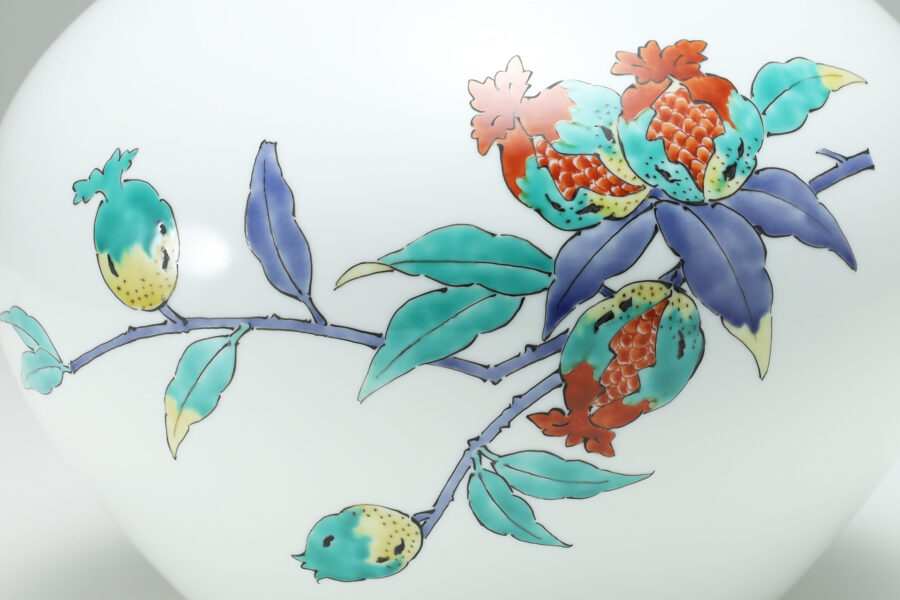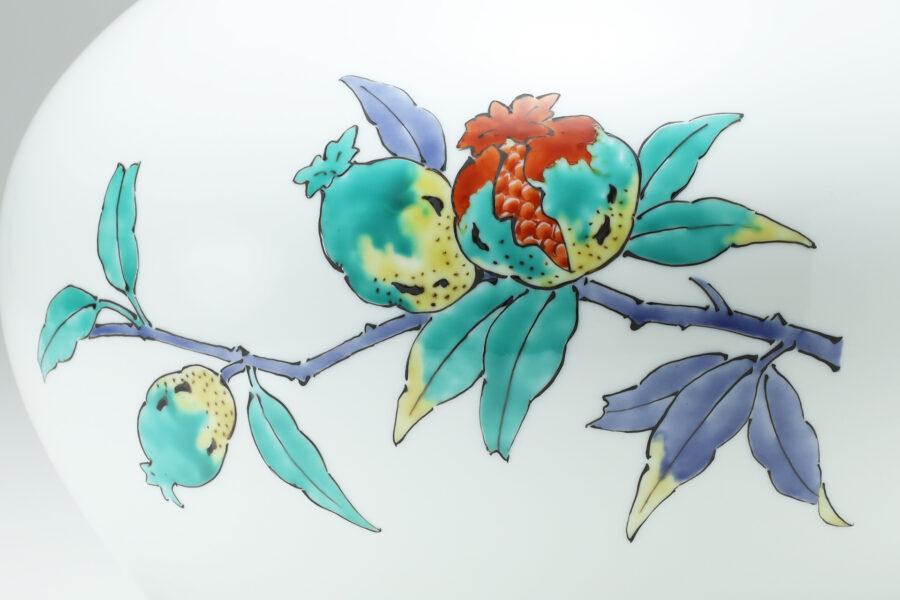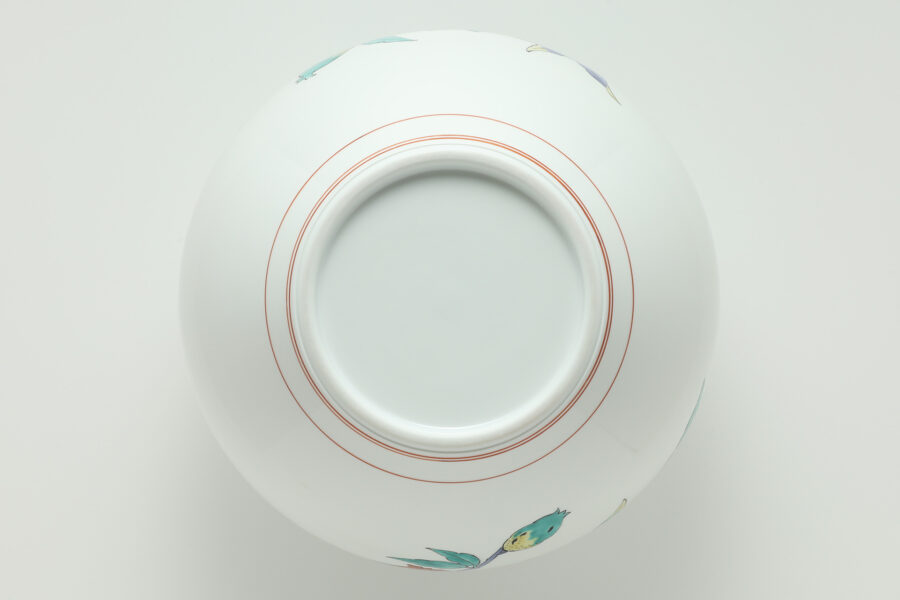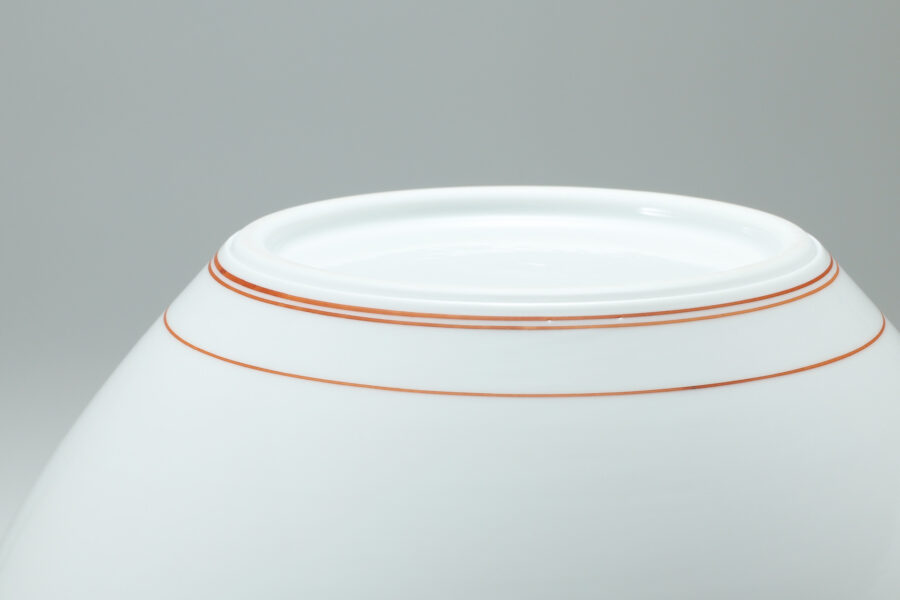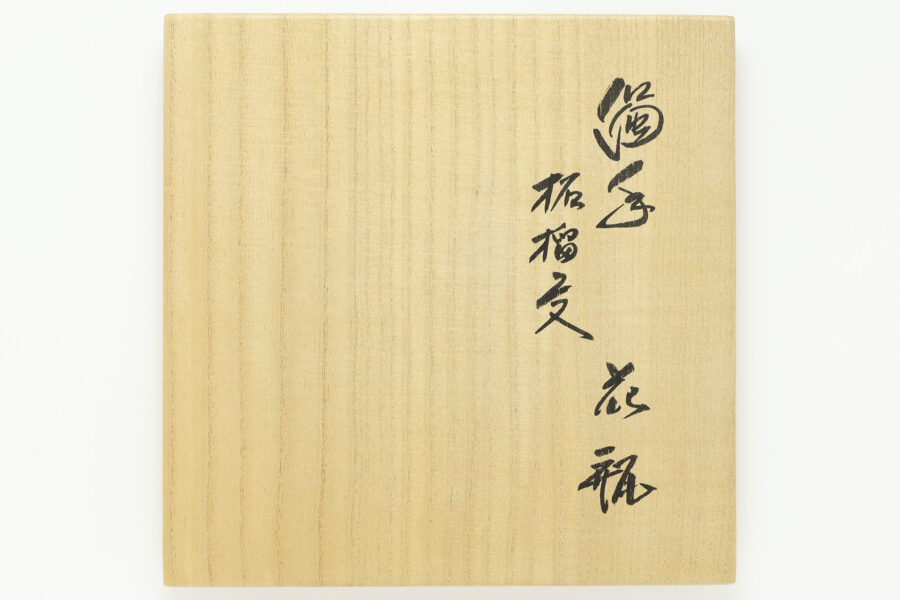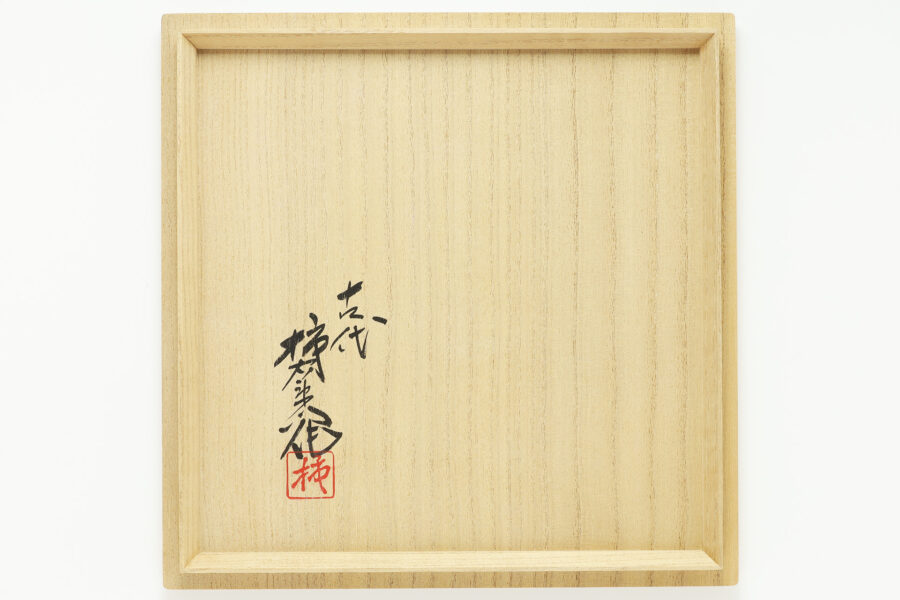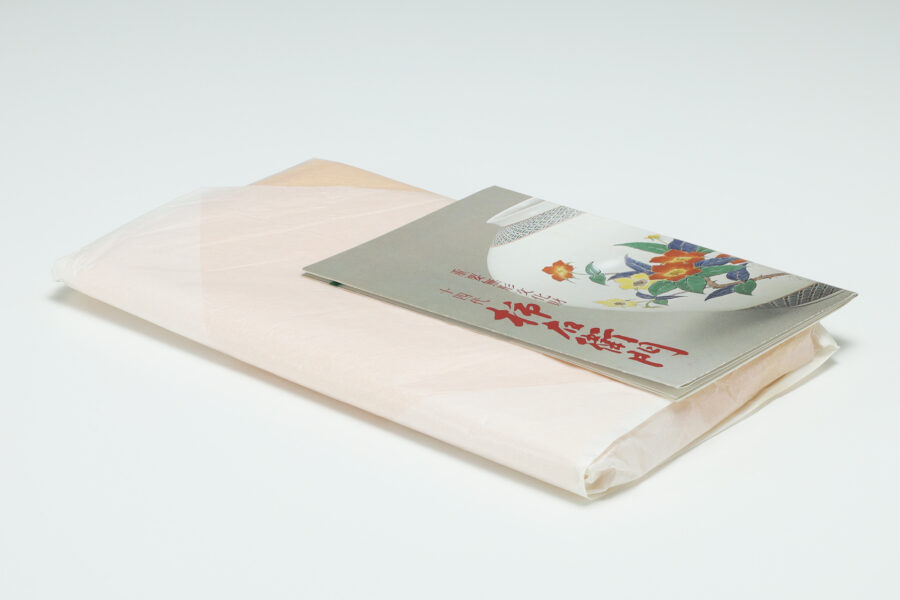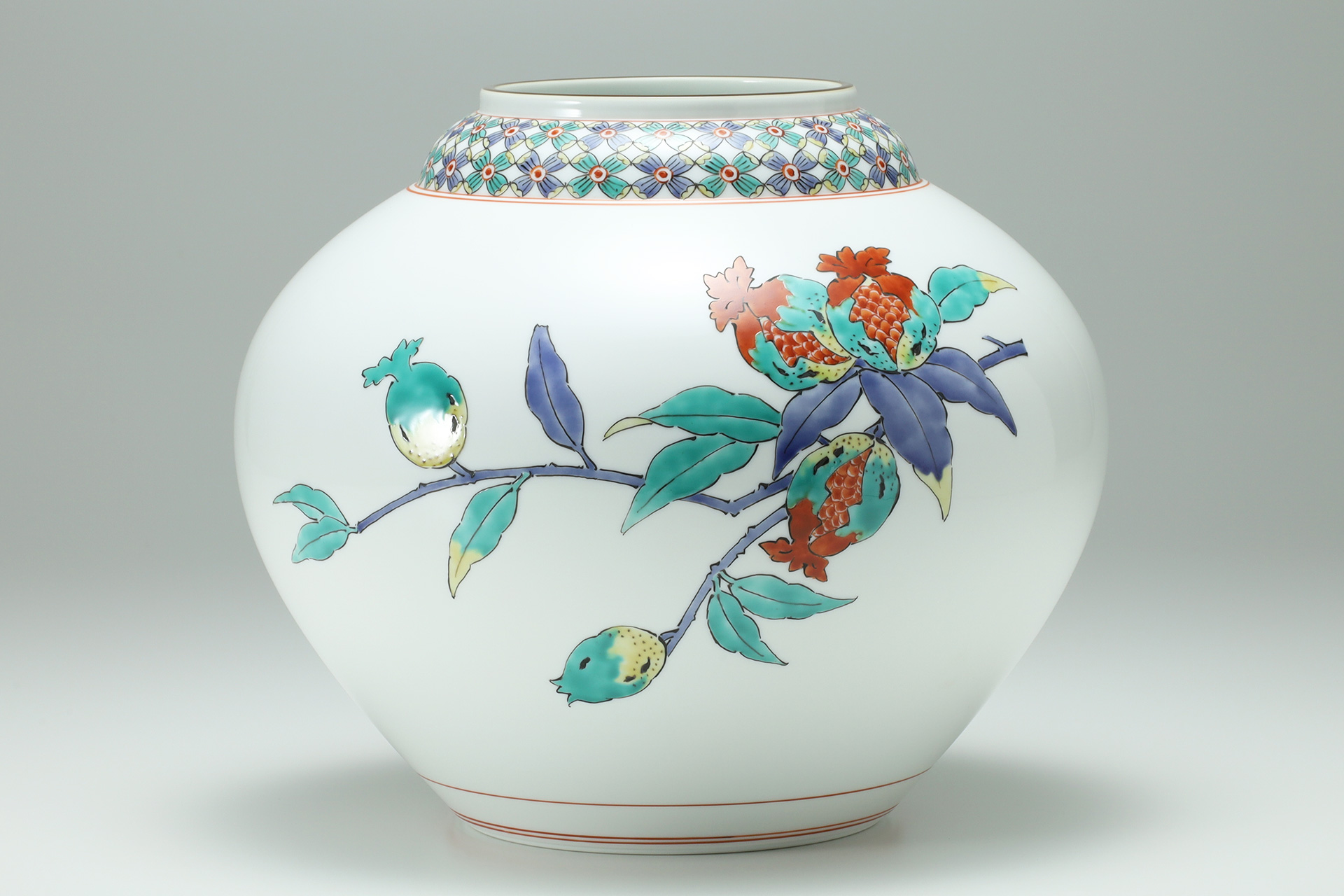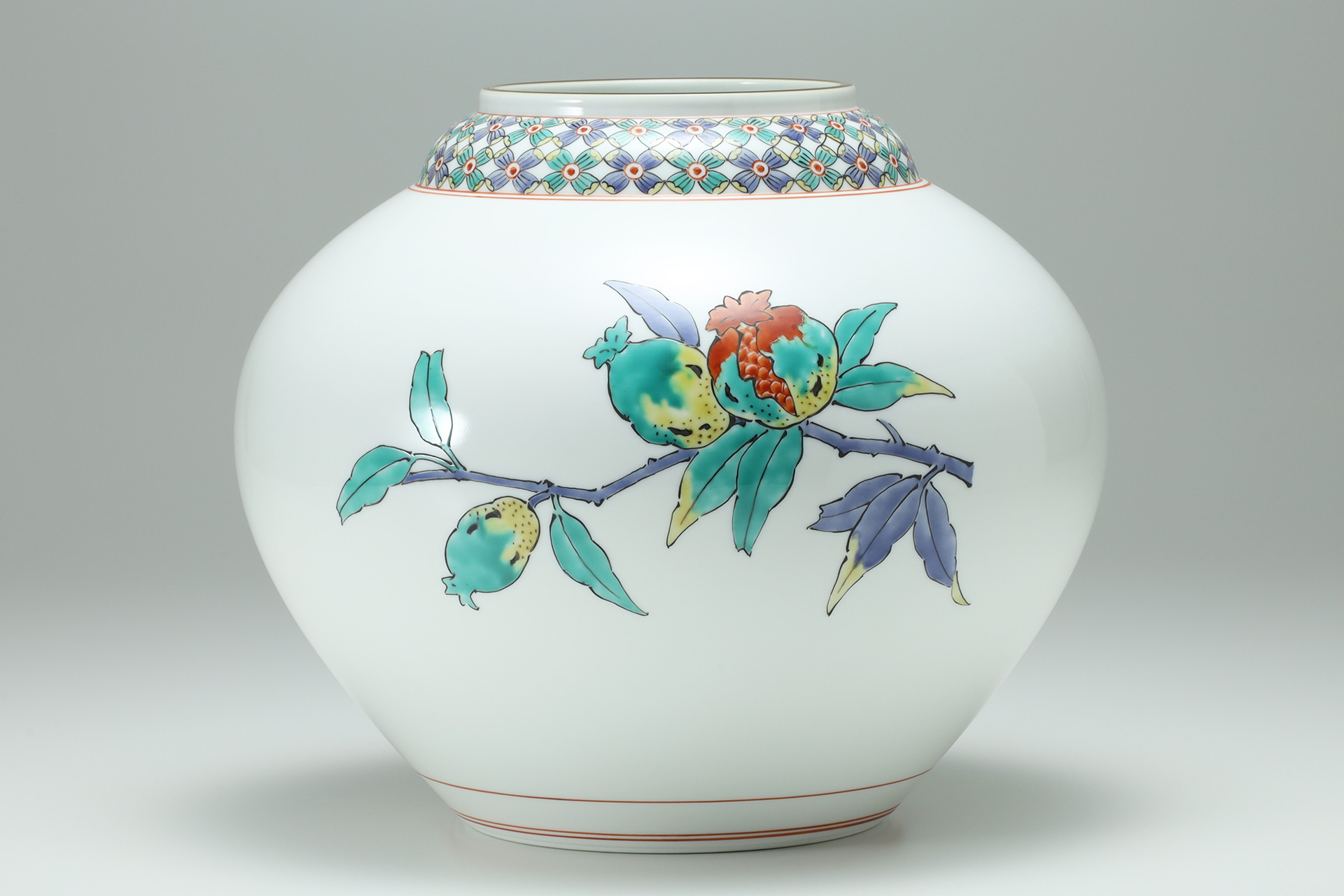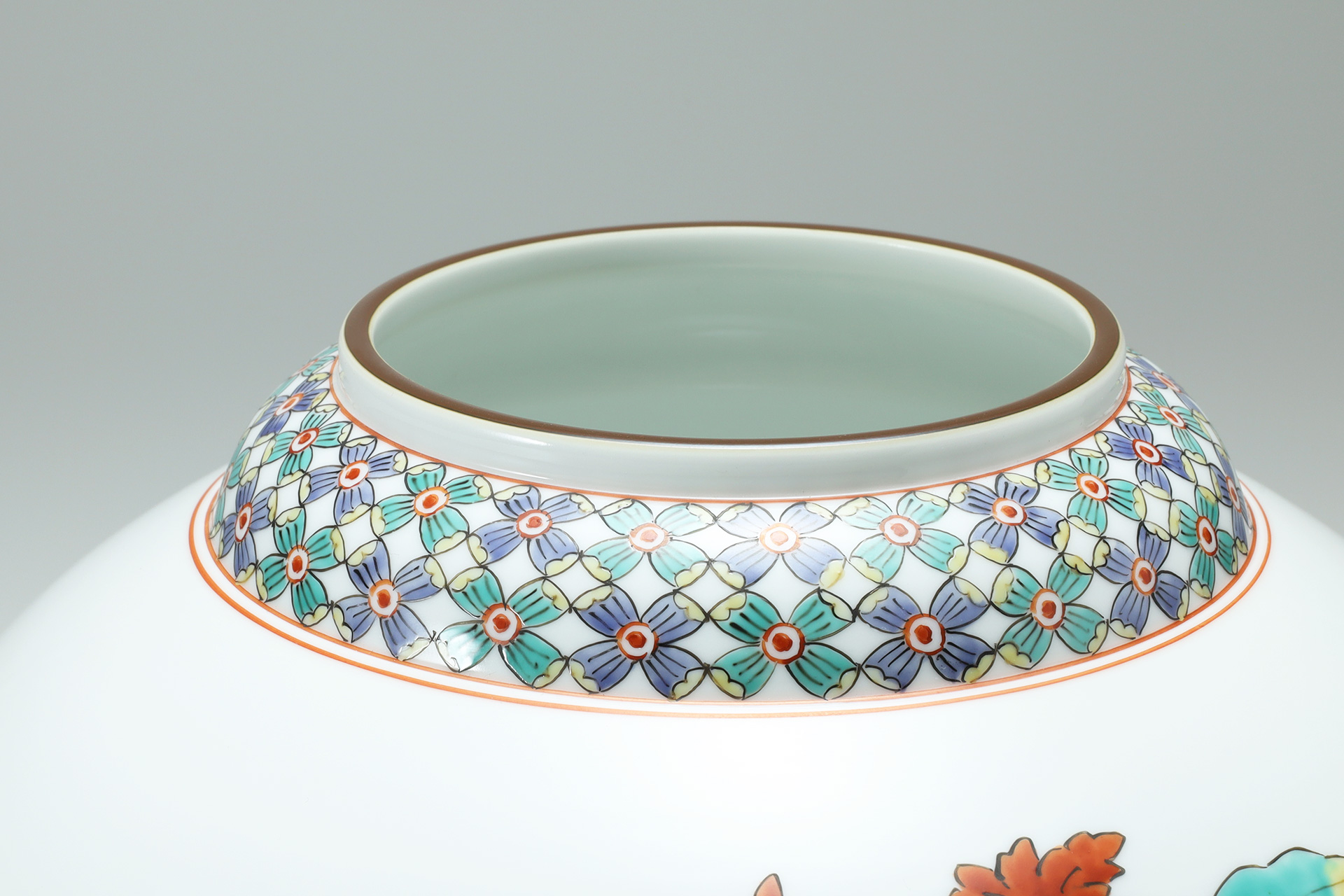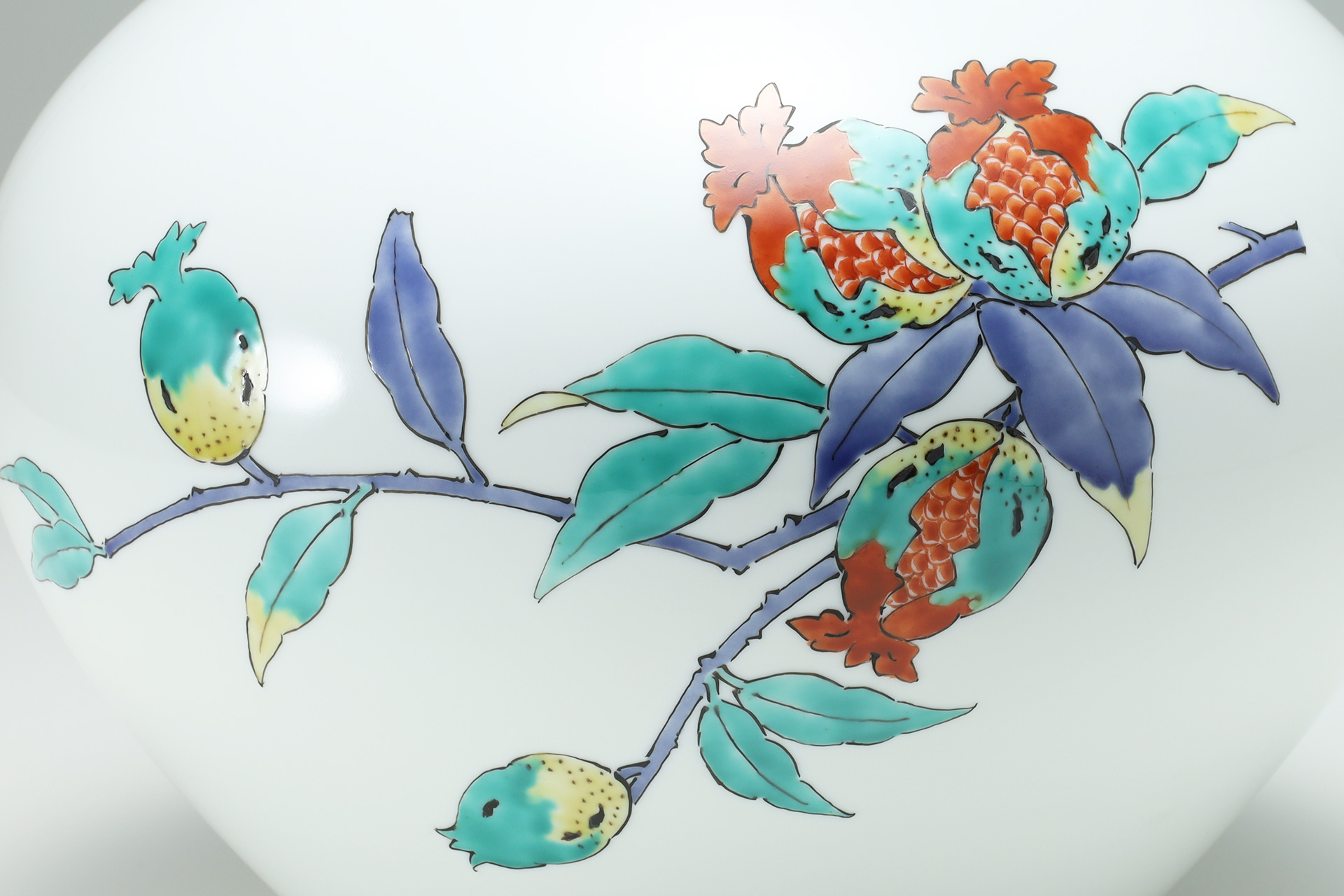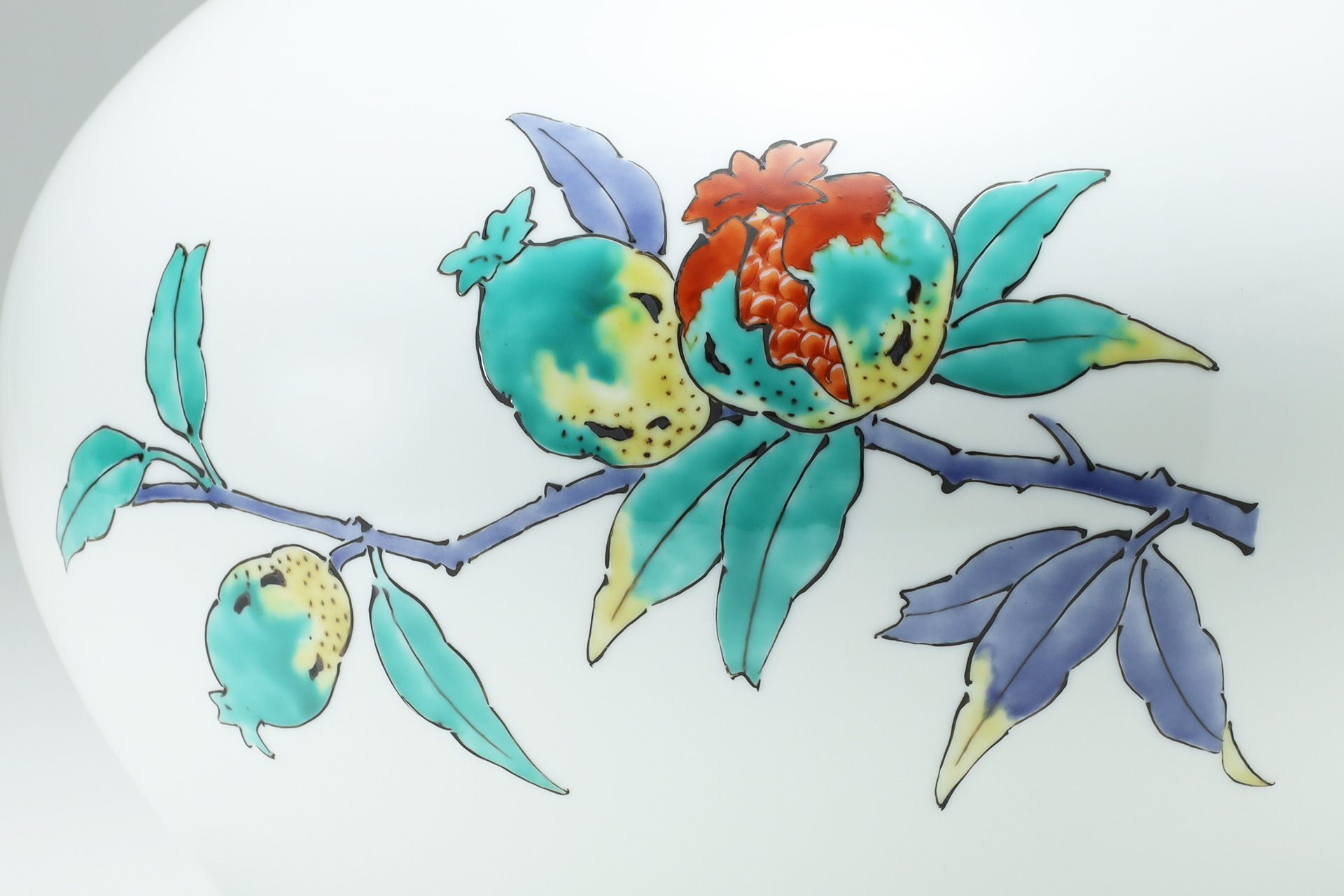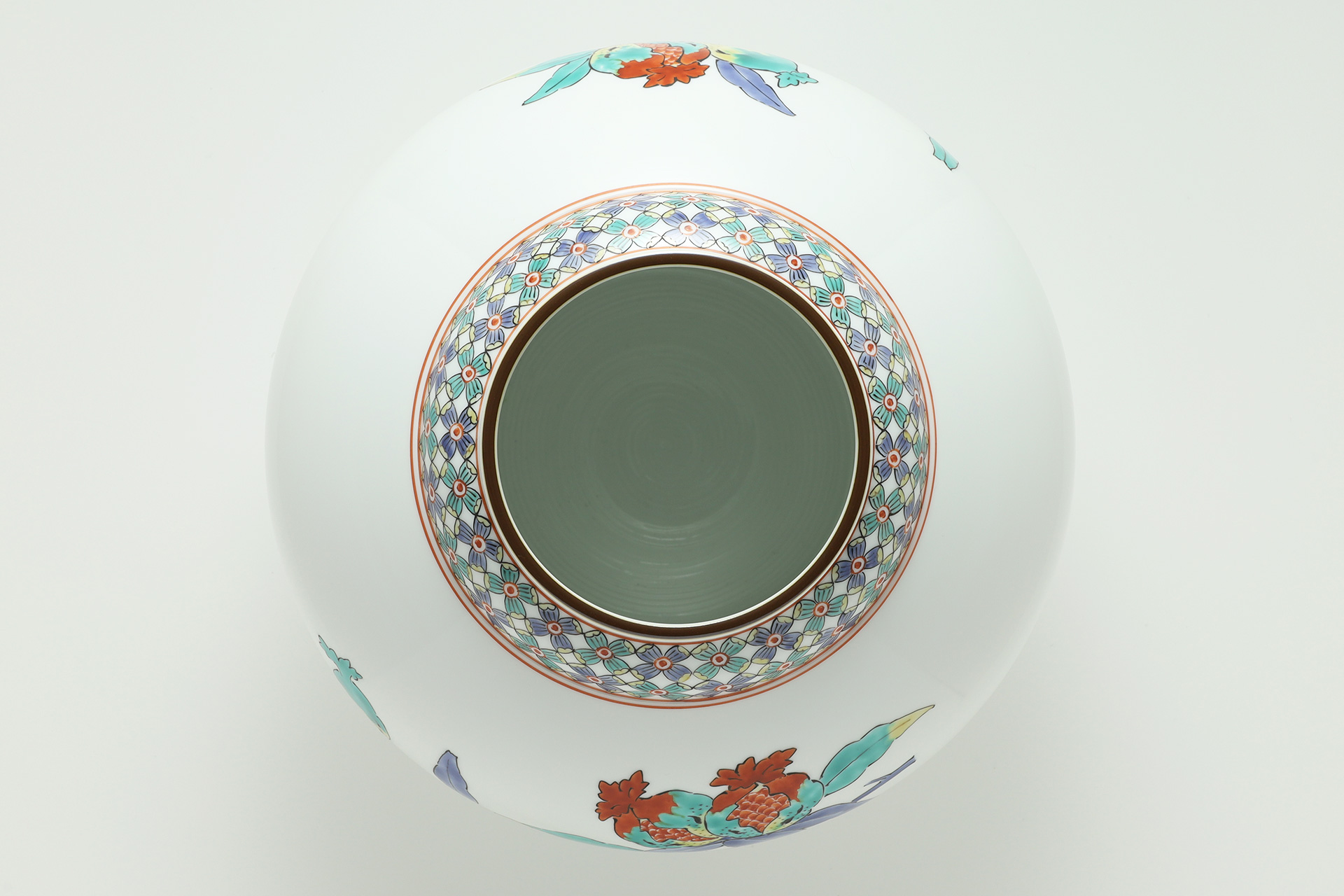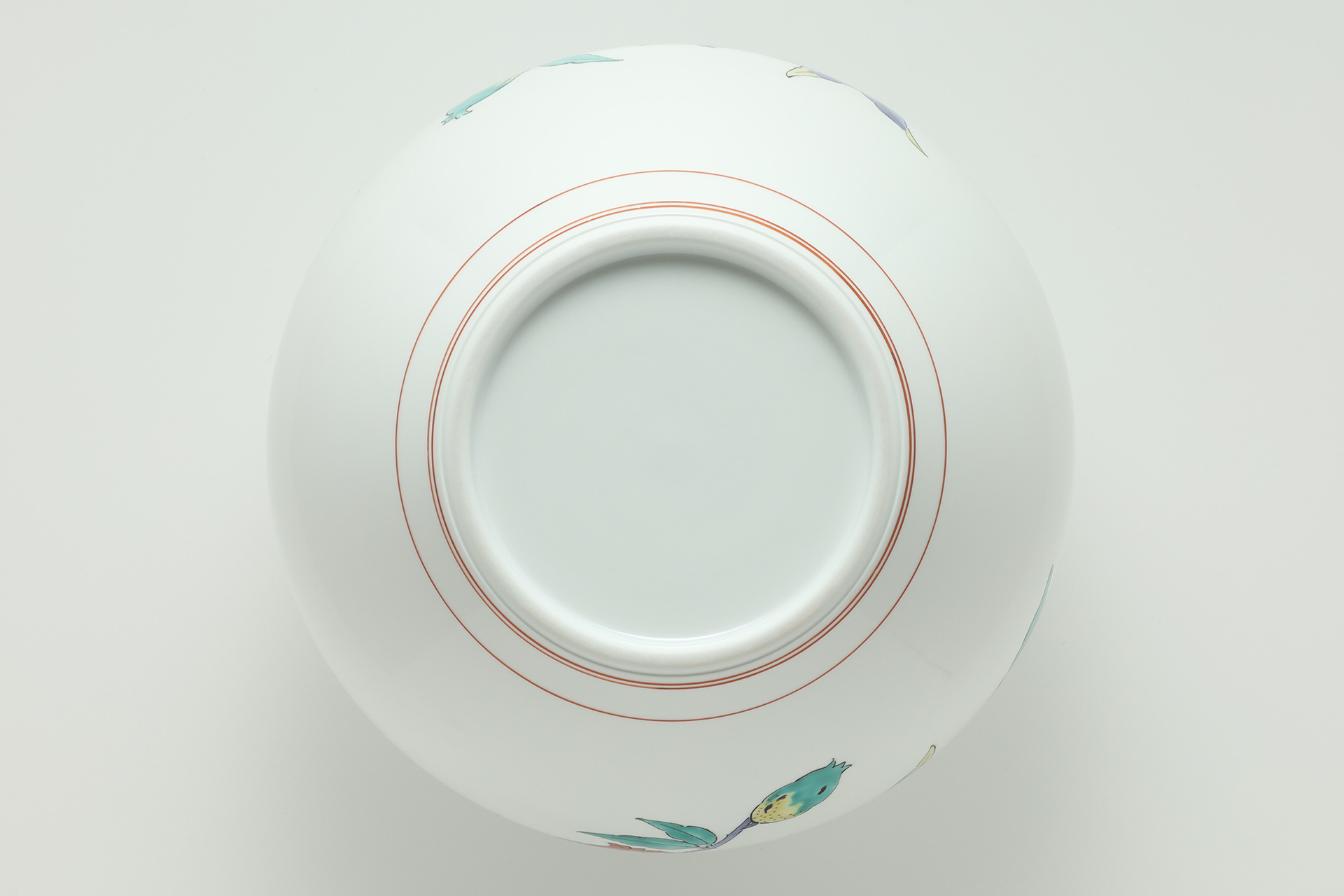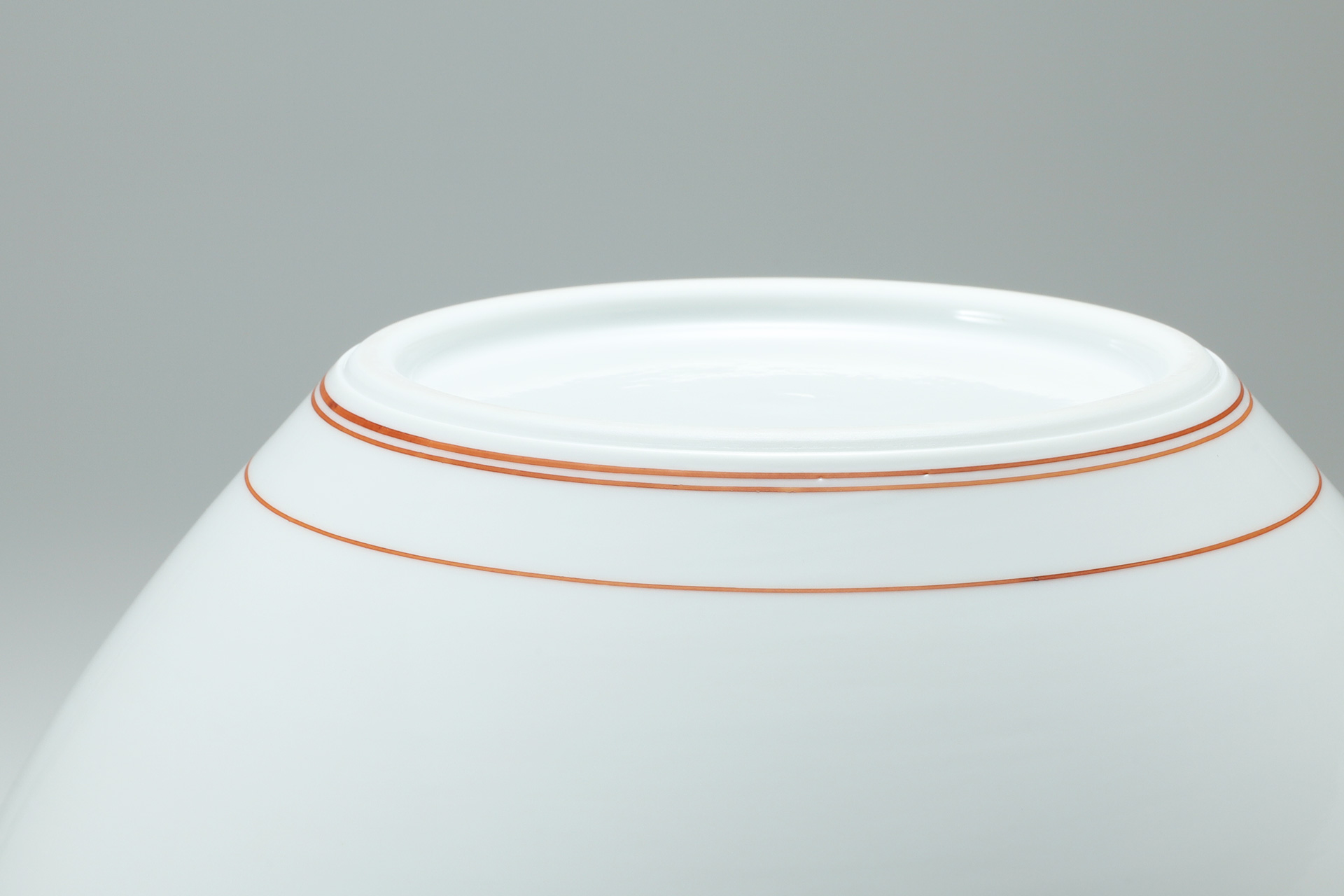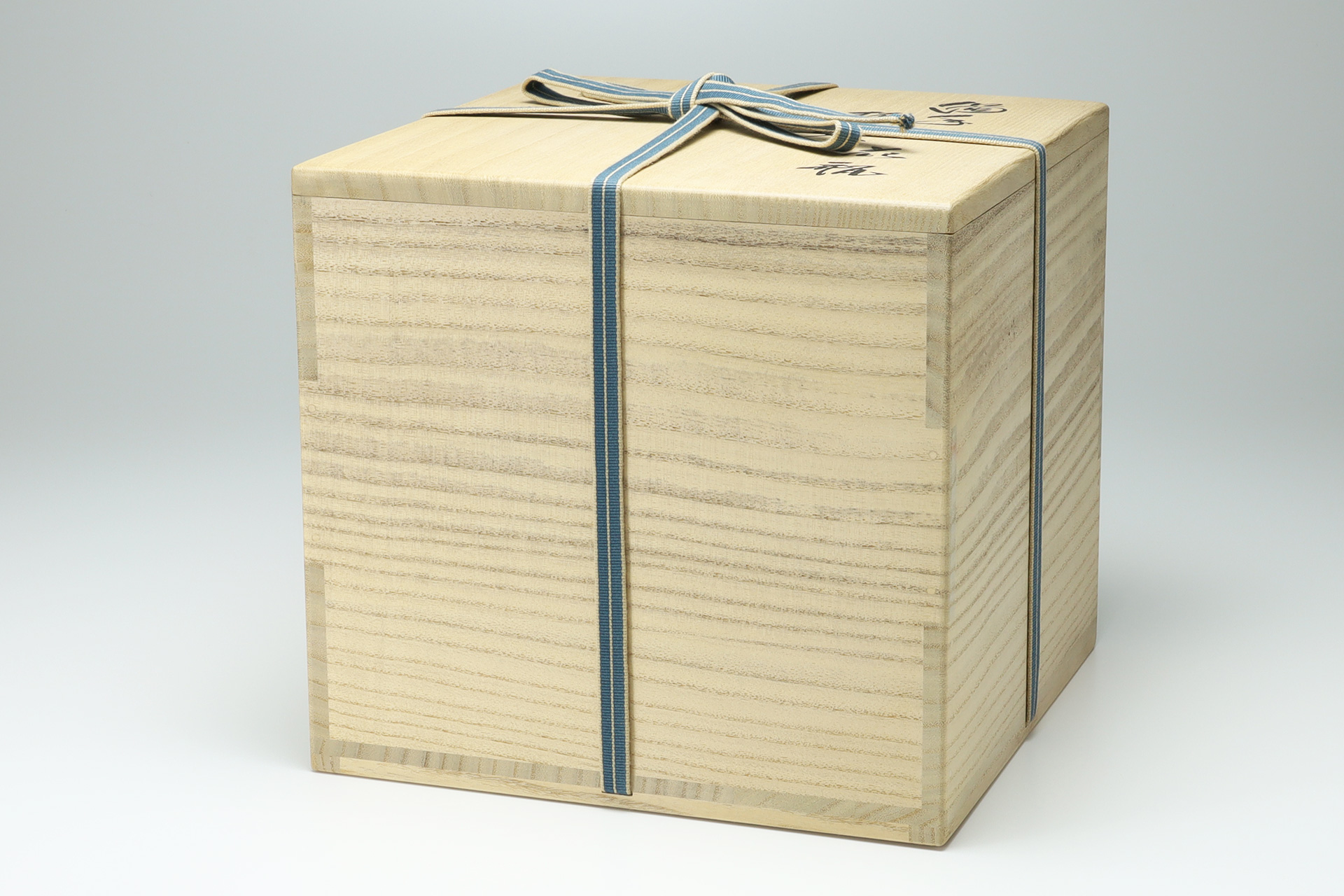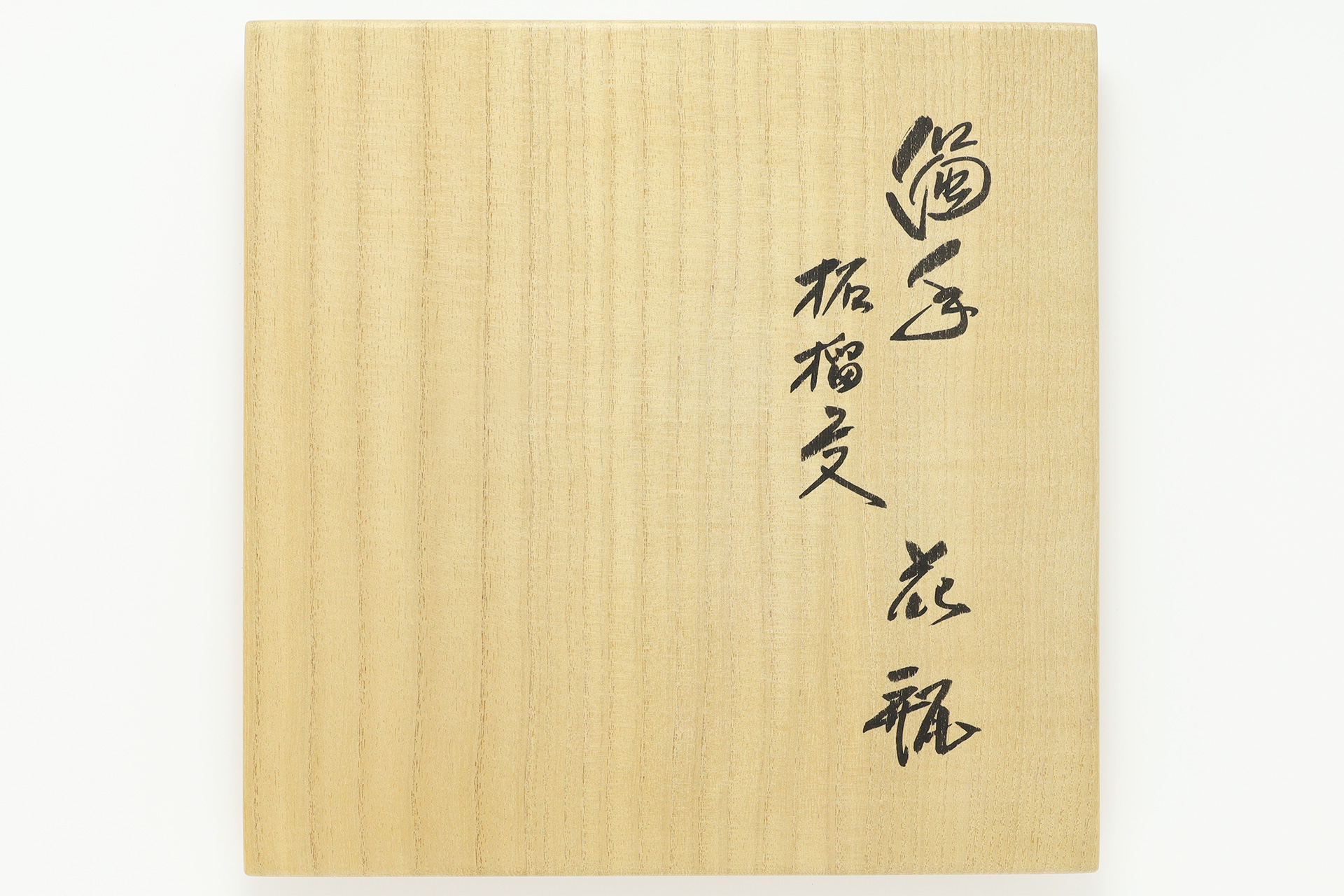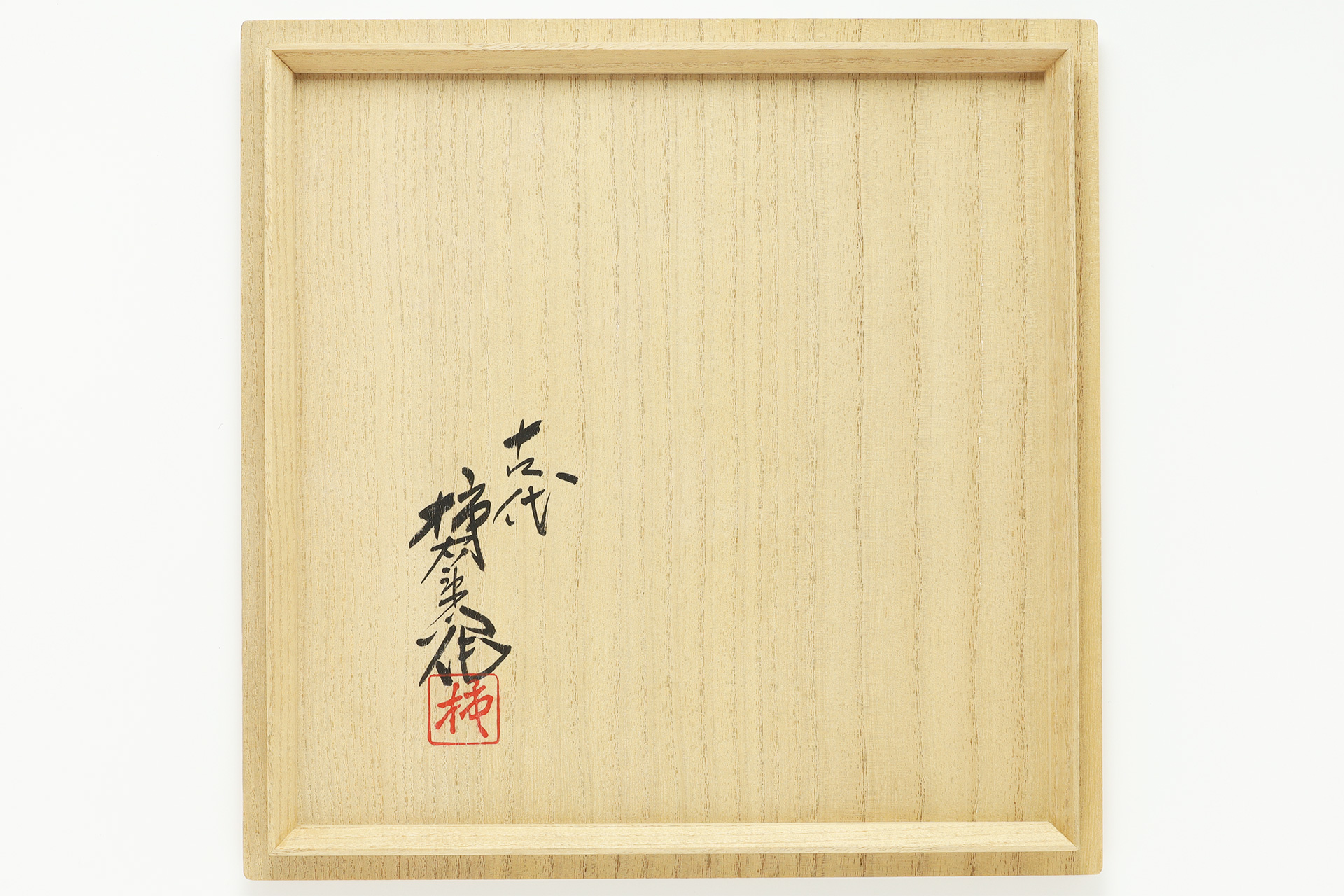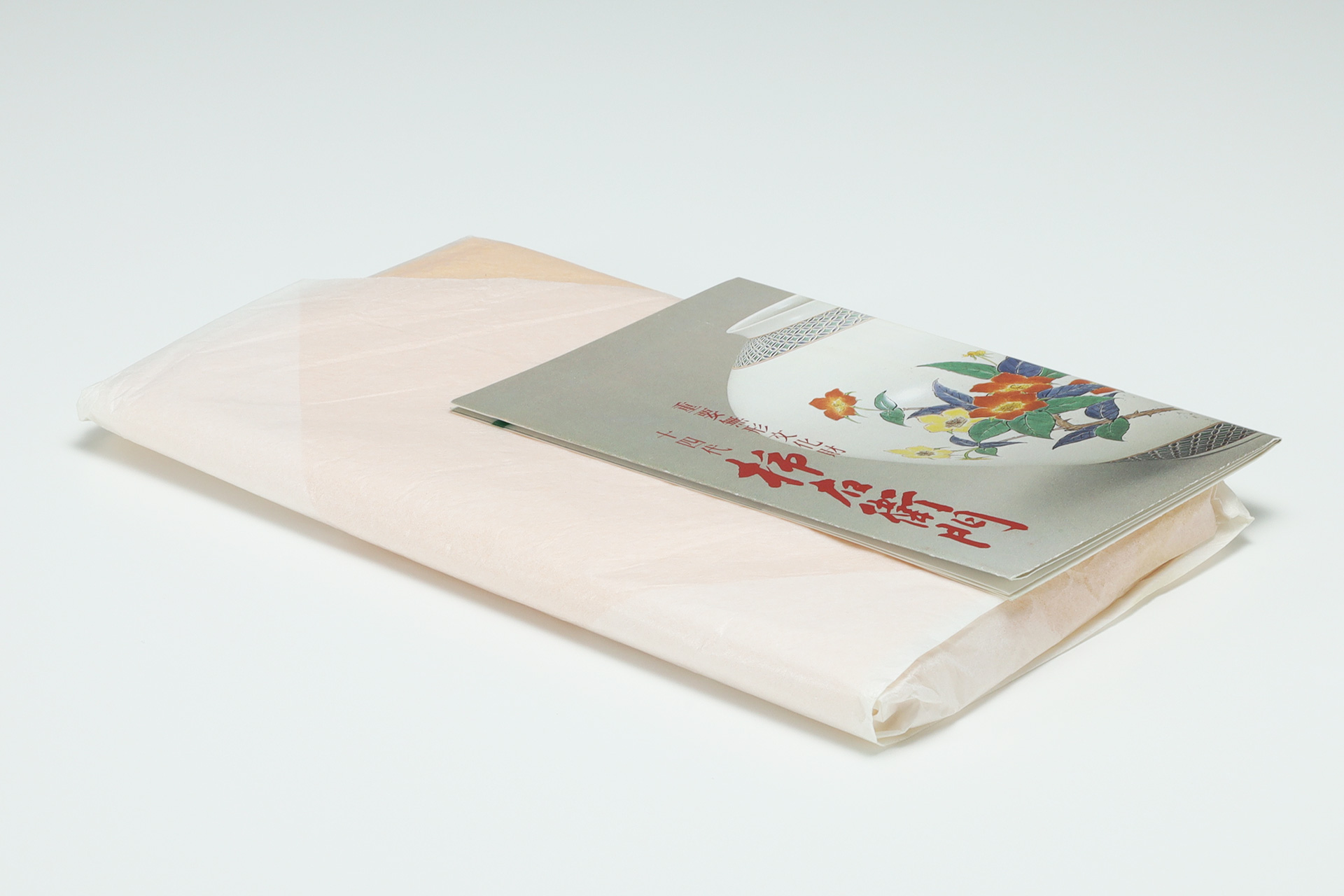Nigoshide Vase with Design of pomegranate(14th Kakiemon Sakaida)
500,000Yen(Tax Included)
The auspicious pomegranate design, which is a symbol of descendant prosperity, beautifully colors the soft nigoshide. The floral design on the upper tier characterizes the vessel shape, and the iron glaze on the rim tightens the whole thing. The dignified and elegant appearance has a solitary presence that tightens the space.
- Artist
- 14th Kakiemon Sakaida
1934-2013
Living National Treasure
- Weight
- 1,284g
- Body Diameter
- 21.7cm
- Top Diameter
- 9.2cm
- Height
- 18.4cm
- Bottom Diameter
- 10.4cm
- Description
- Paulownia Box with Artist's Sign
Cloth with Artist's Sign
Record of the Artist
- Condition
- Excellent Condition
It is in good condition without a feeling of use.
14th Kakiemon Sakaida 1934-2013
14th Kakiemon Sakaida was born in saga prefecture as the eldest son of 13th Kakiemon Sakaida.
Real name is Masashi.
In 1958, after graduating from Tama Art University, department of japanese painting, went home and studied pottery under the 12th Kakiemon and 13th Kakiemon.
In 1967, received the Issuikai Chairman Award.
In 1971, inaugurated as the Regular Members of the Japan Kogei Association.
In 1982, succeeded to the 14th Kakiemon Sakaida. Inaugurated as the Director of the Japan Kogei Association and President of the Kakiemon Pottery Technique Preservation Society.
In 1983, received the Award as the Honorary Citizen by San Francisco, USA.
In 1984, received the Japan Ceramics Society Award and Saga Governor Award.
In 1986, received the Japan Kogei Association Encouragement Award.
In 1992, inaugurated as the Issuikai Ceramic Art Club Steering Committee. Received the Japan Kogei Association Encouragement Award.
In 1993, inaugurated as the Honorary Member of the International Ceramics Academy.
In 1994, inaugurated as the Audit Committee of the Japan Traditional Craft Exhibition.
In 1997, inaugurated as the Chairman of the Saga Prefecture Pottery Association.
In 1998, received the Foreign Minister’s Commendation.
In 1999, inaugurated as the Full time Professor, Graduate School of Arts, Kyushu Sangyo University. Received the Minister of Education’s Commendation.
In 2000, inaugurated as the Chairman of the Arita Ceramic Art Association.
In 2001, inaugurated as the Principal of the Arita College of Ceramics. Certified as the Human National Treasure in Overglaze Porcelain. Received the Saga Shimbun Cultural Award.
In 2005, received the Order of the Rising Sun, Gold Rays with Neck Ribbon. Received the award as the Arita Town Honorary Citizen.
In 2006, inaugurated as the Vice Director of the Japan Kogei Association.
In 2007, received the West Japan Culture Award.
While following traditional techniques, he has developed the unique style that incorporates modernity, and left a great mark as the modern kakiemon master craftsman.
Nigoshide
The “Nigoshide” is known as the most representative technique of the old-kakiemon in its peak. “Nigoshi” means rice water in the saga dialect, and kakiemon white porcelain, with its warm milky white color like rice water, is called “Nigoshide” or “Nyuhakude”. The color is called “Milky White” outside of japan. Overglaze enamels look vivid because they do not have the bluish tones of white porcelain or blue and white porcelain. This style requires patiently removing impurities(especially the iron content)from the base material and applying a thin layer of ceramic glaze after removing its impurities. The “Tsuchiawase-Cho(the notebook describing soil preparations)” from 1690, which remains in the sakaida family, explains the soil preparation used for the base of nigoshide. It can be seen that the three types of porcelain stone from izumiyama, shirakawa, and iwayagawachi were mixed at a ratio of 6:3:1. There are many failures due to the difference in the shrinkage rate of mixing porcelain stone, it is said that only about 50% of flat objects such as dish and about 20% of three dimensional objects such as jar can be removed. This inefficiency in production is also considered to be one of the causes of the discontinuation of nigoshide. Nigoshide, the ultimate porcelain base developed for export to europe, established itself as the highest quality white porcelain base in the old-kakiemon. The old-kakiemon, which harmonized nigoshide and colors by drawing design while leaving some blank spaces, attracted the attention of royalty, aristocrats, and the wealthy and gained deep rooted popularity. It can be inferred that from around the 1650s kusunokidani kiln began to develop substrates exclusively for overglaze enamels. However, during its experimental period, the roughness of the molding was noticeable, and trace amounts of iron sometimes appeared on the surface. The classic nigoshide did not arrive until the Enpo era(1673-81). Porcelain exports declined sharply after the 18th century, and nigoshide ceased to flourish in the late edo period, but in 1953, the 12th and 13th Kakiemon Sakaida succeeded in reviving nigoshide. It is not known when the name “Nigoshide” was first used, but since It is not found in any documents from the edo period, It’s believed to be a post modern term(showa era).
「Own Work(Nigoshide)」and「Kiln Work(Nishikide)」
14th Kakiemon Sakaida defined Nigoshide as “Own Work” and clearly distinguished other works as “Kiln Work” (Luxury Furnishings for Mass Work). Own work(Nigoshide)has “No Signature”, and kiln work (Nishikide) has “Name in Blue and White”. In order to maintain the highest quality as a work of art, the “Kakiemon Pottery Technology Preservation Society”, which consists of elite senior technicians, is in charge of “Nigoshide” and has established it as a solitary expression technique that is not limited to imitation of the past.
Pomegranate
The Pomegranates was introduced to japan during the heian period as fruit trees and ornamentals. Bright red flowers open around june, and the fruit ripens in autumn, taking on a large spherical shape. The fruit skin is yellowish red with black spots, and when ripe, it splits to expose some of the many seeds inside. In china, it is an auspicious design that means abundance of children, and in japan it is also considered an auspicious fruit as a symbol of Kishimojin.
